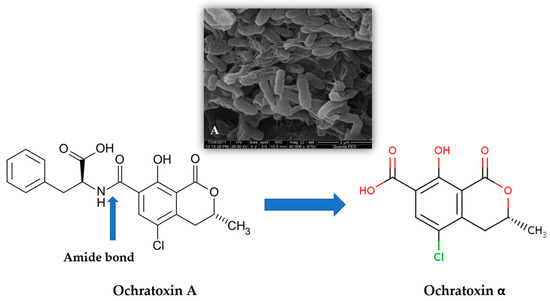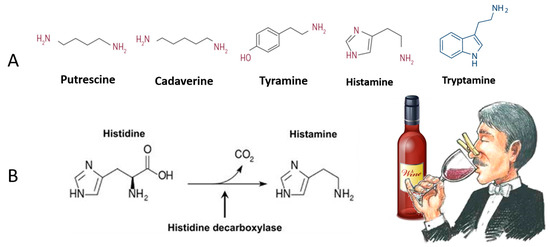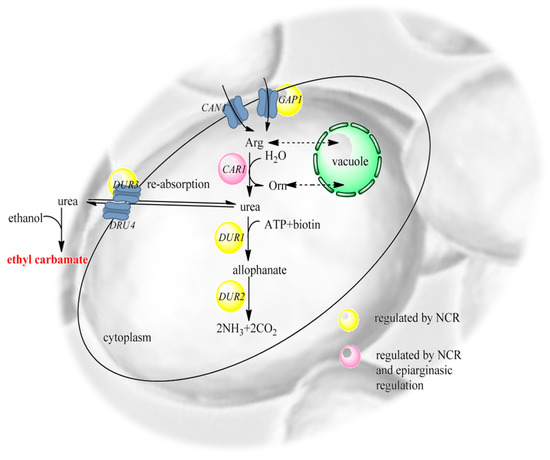A relevant trend in winemaking is to reduce the use of chemical compounds in both the vineyard and winery. In organic productions, synthetic chemical fertilizers, pesticides, and genetically modified organisms must be avoided, aiming to achieve the production of a “safer wine”.” Safety represents a significantbig threat all over the world, being one of the most important goals to be completachieved in both Western society and developing countries. An occurrence in wine safety results in the recovery of a broad variety of harmful compounds for human health such as amines, carbamate, and mycotoxins. The perceived increase in sensory complexity and superiority of successful uninoculated wine fermentations, as well as a thrust from consumers looking for a more “natural” or “organic” wine, produced with fewer additives, and perceived health attributes, has led to more investigations into the use of non-Saccharomyces yeasts in winemaking, namely in organic wines.
- ochratoxin A (OTA)
- mycotoxins
- biogenic amines (BAs)
- ethyl carbamate (EC)
- organic wines
- non-Saccharomyces
1. General Introduction
2. Wine Contamination by Ochratoxin A (OTA) and Other Mycotoxins
Human health issues and scientific attention are focused mainly on carcinogenic/toxic mycotoxins [14][15][15,16]. More than 300 mycotoxins have been identified, and they are produced by filamentous fungi, mainly Aspergillus spp, Fusarium spp., and Penicillium spp. [16][17]. OTA is produced from fungi, namely Aspergillus spp. and Penicillium spp., and derives from 3,4-dihydrocumarin linked to an amide bond with an amino group of L-β-phenylalanine [17][18].[18,19], and Iit can appear in grapes (pre-harvest) and/or during pre-fermentation [19][20][20,21]. Its presence in wines is mainly found in red wine, followed by rosé and white wines [21][22][22,23]. TOchratoxin A is classified by the International Agency for Research classifies Ochratoxin A on on Cancer (IARC) [23][24] in group 2B (possible human carcinogen), so it is an excellengreat threat tofor humans. It accumulates in several tissues in the body, with the kidneys being its primarymain target, causing Balkan endemic nephropathy (BEN), chronic interstitial nephritis, and karyomegalic interstitial nephritis [8][9]. The presence of OTA in blood from healthy humans confirms continuous and widespread exposure;, thus, the Scientific Panel on Contaminants in the Food Chain from the European Food Safety Authority [24][25] set OTA tolerable weekly intake (TWI) to 120 ng/kg body weight [8][9]. OTA levels in wines depend on various factors such as weather and vineyard location, tharveste period of harvest, pesticide treatments, wine fermentation, and duration of grape maceration [8][9]. The European Union allows a maximum limit for OTA in the wine of 2 ng/g [22][23]. The wines/musts decontamination of OTA has been revised by Quintela et al. [25][26] and, for conventionandl wines, physical, chemical, or biological methods can be applied to conventional wines. For organic wines, owing to the restrictions imposed by IFAOM, most of the chemical treatments cannot be used once the chemical products recommended for conventional wines (chitin and chitosan, urease, polyvinylpolypyrrolidone (PVPP) [22][23]) are forbidden for this kind of wine. A possible way for wine decontamination could be the bioremediation [20][25][21,26] through toxin degradation and adsorption. Several enzymes may be involved in the microbiological degradation of OTA., Still,but not much information is available, and only a few have been characterized, including the pancreatic enzyme carboxypeptidase A (CPA) (EC 3.4.17.1) from bovine, the first protease reported to be able to hydrolyze OTA [26][27]. Toxin degradation can be performed by the bacteria Pediococcus parvulus [27][28], the bacteria Acinetobacter calcoaceticus [28][29], and the soil bacteria Cupriavidus basilensis [18][19]. These microorganisms hydrolyze the OTA amide bond and produce ochratoxin α (OT α), a non-toxic compound (Figure 1). This pathway is promising; however, the production of OTα could also be a threat, because the implication of the accumulation of this compound in the body is yet unclear.
3. Organic Wines Contamination with Biogenic Amines
Biogenic amines (BAs) are low-molecular-weight organic molecules originating in fermented foods from the microbial catabolism of the corresponding amino acids. Wine BA includes putrescine (from arginine and ornithine), cadaverine (from lysine), tyramine (from tyrosine), histamine (from histidine), and tryptamine (from tryptophane) [8][9]; Figure 2. The production of BAs is a strategy to obtain metabolic advantages to face certain stress conditions [40][58].
4. Wines and Ethyl Carbamate Contamination
Wine, including organic wines, possesses distinct nutrients, in which various a variety of microorganisms, namely yeasts and bacteria, exist. The fermentation processes may unavoidably produce toxic products because of metabolism and side reactions, including biogenic amines (BAs) and ethyl carbamate (EC). Curiously, these compounds are generated owing to the incomplete metabolism of nitrogen-containing compounds during the fermentation process [48][72]. EC is mainly produced by lactic acid bacteria and through the chemical combination of urea with ethanol during wine aging. The IAREC has been upgraded Eby the IARC to a “probable human carcinogen,””, Group 2A [49][50][73,74]. The carcinogenicity of EC has been verified in several animal species, from rats, hamsters, and monkeys [49][51][73,75]. In rodents, EC has been found to cause a dose-dependent increase in carcinomas of the liver, lungs, heart, mammary gland, ovaries, skin, and forestomach, among which hepatocellular tumors appear to lincrease linearlyearly increase with EC concentration [50][52][74,76]. During fermentation, five metabolic pathways were identified for the formation of EC. The significmantjor precursors of the construcformation of EC contain a carbamyl group, and these includinge urea, citrulline, and carbamoyl phosphate. Furthermore, it has been shown that cyanic acid and diethylpyrocarbonate are involved in EC formation [50][74]. The reaction between urea and ethanol is winthe's most common metabolic pathway of EC formation found in wine. The abundance of urea in grapes makes it the most common precursor. Moreover, during ethanol fermentation, the accumulation of urea originatinged from the catabolism of arginine contributes to the reaction between urea and ethanol. Additionally, urea mainly results from the metabolism of arginine by S. cerevisiae [50][53][74,77]. TEC can also be formed by the reaction between citrulline and ethanol can also form EC. Grape juice already contains a certain amount of citrulline, but much of this compound has its originates in the catabolism of arginine. Moreover, the generation of citrulline is assigned to the metabolism of arginine by lactic acid bacteria (LAB) via malolactic fermentation [54][78]. EC, in some alcoholic beverages, may also appear das a resue tolt of the reaction between cyanic acid and ethanol and, and/or the reaction between carbamyl phosphate and ethanol. However, these are rare phenomena in wine [50][74]. The reaction between diethylpyrocarbonate and ammonia nowadays occurs less frequently, mainly in organic wines. The appearance of diethylpyrocarbonate stems from artificial additives. This compound was known to reduce contamination and spoilage by microorganisms (yeasts or bacteria). However, the use of diethylpyrocarbonate was abandoned dueowing to its toxicity and the undesirable side effect of EC formation [55][79]. To better understand the metabolic formation of EC in S. cerevisiae, urea's transport and metabolic regulation of urea in S. cerevisiae must be studied. Intracellular urea mainly results from the degradation of arginine through catalysis by arginase (Figure 3). As a toxic and poor nitrogen source for S. cerevisiae, the generated urea is usually accumulated and exported to the nearby medium via a facilitated transport diffusion system (Figure 3, [50][74]). S. cerevisiae metabolizes urea in two steps. First, urea is carboxylated to form allophanate by urea carboxylase. Then, allophanate is degraded to CO2 and NH4+ by allophanate hydrolase. The activities of urea carboxylase and allophanate hydrolase activities are performed by a bifunctional enzyme, urea amidolyase, encoded by the DUR1,2 genes, and silenced by nitrogen catabolic repression (NCR) [56][80]. The DUR3 gene encodes urea permease. Under fermentation conditions, degradargininetion is obstructs degradationed by arginine, which is abundant in fermented sources and acts as a superior nitrogen supply compared with urea [50][74].
